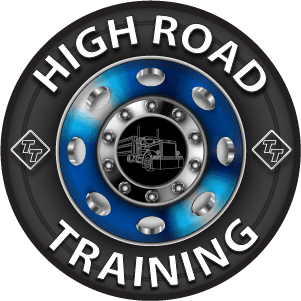Note: Your are not logged in. We can not keep your scores or track your progress unless you Register and Log In
9.6.5 – Hazmat Route Restrictions
Some states and counties require permits to transport hazardous materials or wastes. They may limit the routes you can use. Local rules about routes and permits change often. It is your job as a driver to find out if you need permits or must use special routes. Make sure you have all the needed papers before starting.
If you work for a carrier, ask your dispatcher about route restrictions or permits. If you are an independent trucker and are planning a new route, check with state agencies where you plan to travel. Some localities prohibit the transportation of hazardous materials through tunnels, over bridges, or other roadways. Always check before you start.
Whenever placarded, avoid heavily populated areas, crowds, tunnels, narrow streets, and alleys. Take other routes, even if inconvenient, unless there is no other way. Never drive a placarded vehicle near open fires unless you can safely pass without stopping.
If transporting Division 1.1, 1.2, or 1.3 explosives, you must have a written route plan and follow that plan. Carriers prepare the route plan in advance and give the driver a copy. You may plan the route yourself if you pick up the explosives at a location other than your employer's terminal. Write out the plan in advance. Keep a copy of it with you while transporting the explosives. Deliver shipments of explosives only to authorized persons or leave them in locked rooms designed for explosives storage.
A carrier must choose the safest route to transport placarded radioactive materials. After choosing the route, the carrier must tell the driver about the radioactive materials and show the route plan.
9.6.6 – No Smoking
Do not smoke within 25 feet of a placarded cargo tank used for Class 3 (flammable liquids) or Division 2.1 (gases). Also, do not smoke or carry a lighted cigarette, cigar or pipe within 25 feet of any vehicle that contains:
- Class 1 (explosives).
- Class 3 (flammable liquids).
- Class 4 (flammable solids).
- Class 4.2 (spontaneously combustible).
9.6.7 – Refuel with Engine Off
Turn off your engine before fueling a motor vehicle containing hazardous materials. Someone must always be at the nozzle controlling fuel flow.
9.6.8 – 10 B:C Fire Extinguisher
The power unit of placarded vehicles must have a fire extinguisher with a UL rating of 10 B:C or more.
9.6.9 – Check Tires
Make sure your tires are properly inflated. Check placarded vehicles with dual tires at the start of each trip and when you park. You must check the tires each time you stop. The only acceptable way to check tire pressure is to use a tire pressure gauge.
Do not drive with a tire that is leaking or flat except to the nearest safe place to fix it. Remove any overheated tire. Place it a safe distance from your vehicle. Do not drive until you correct the cause of the overheating. Remember to follow the rules about parking and attending placarded vehicles. They apply even when checking, repairing, or replacing tires.
Multiple-Choice Questions:
Do not smoke or carry a lighted cigarette, cigar or pipe within 25 feet of any vehicle that contains
- Class 3 (flammable liquids)
- Class 1 (explosives)
- Class 4 (flammable solids)
- All these are correct
Do not smoke within 25 feet of a placarded cargo tank used for Class 3 (flammable liquids) or Division 2.1 (gases). Also, do not smoke or carry a lighted cigarette, cigar or pipe within 25 feet of any vehicle that contains:
- Class 1 (explosives).
- Class 3 (flammable liquids).
- Class 4 (flammable solids).
- Class 4.2 (spontaneously combustible).
What must you do with a placarded vehicle each time you stop?
- Fuel the vehicle
- Open the pressure relief valve
- Check in with federal emergency response personnel
- Check the tires
Make sure your tires are properly inflated. Check placarded vehicles with dual tires at the start of each trip and when you park. You must check the tires each time you stop. The only acceptable way to check tire pressure is to use a tire pressure gauge.
The power unit of placarded vehicles must have a fire extinguisher with a UL rating of 10:
- 5 B:C or more
- 10 A:B or more
- 10 B:C or more
- 10 A:C or more
The power unit of placarded vehicles must have a fire extinguisher with a UL rating of 10 B:C or more.
Which of the following are true about fueling a vehicle containing hazardous materials?
- You must fuel in special designated fuel stops only
- All these are correct
- Turn your engine off and make sure someone is always at the fuel nozzle
- Never fuel a vehicle with more than 1/2 tank of fuel left to avoid making extra fueling stops, which can be dangerous
Turn off your engine before fueling a motor vehicle containing hazardous materials. Someone must always be at the nozzle controlling fuel flow.
Complete!
You can Return To The Table Of Contents







 TT On Facebook
TT On Facebook